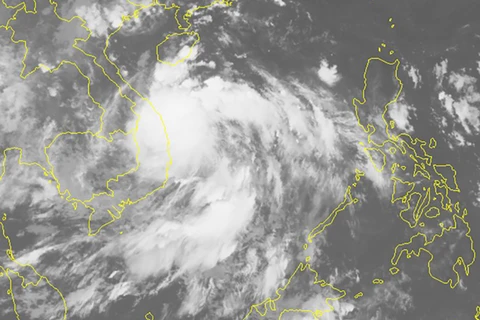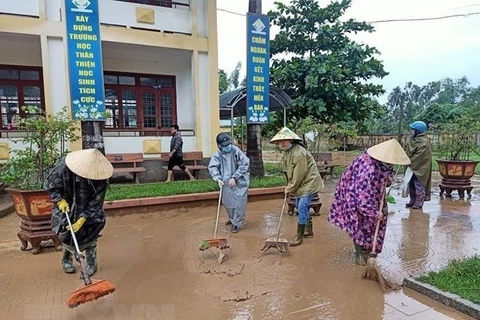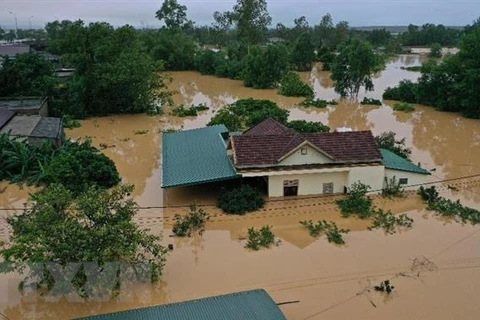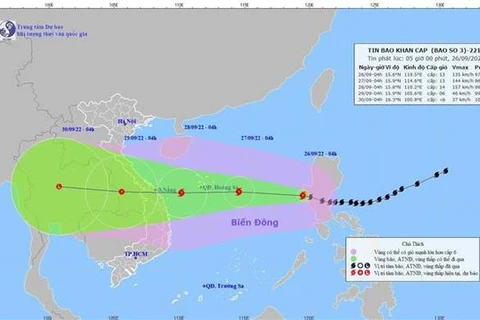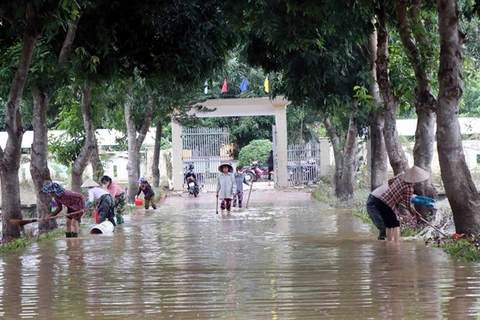Hanoi (VNA) – Stronger efforts and resources, including the transfer of science and technologies, along with early warning and actions will help Vietnam mitigate natural disaster risks, an official has said.
According to Deputy Minister of Agriculture and Rural Development Nguyen Hoang Hiep, as one of the five countries hardest hit by climate change and natural disasters, Vietnam has defined actions regarding climate and natural disaster risk management as one of its priorities.
Hiep, who is the deputy head of the National Steering Committee on Natural Disaster Prevention and Control, said that Vietnam has actively engaged in cooperation mechanisms on natural disaster mitigation, while responsibly implementing international protocols, treaties and agreements in this regard.
Particularly, as the Chair of the ASEAN Committee on Natural Disaster Management in 2023, Vietnam commits to acting as a bridge for cooperation between the association and countries in the Asia-Pacific region to seek strategic solutions to many risks at the same time, he said.
Hiep held that the UN should further strengthen its support to most vulnerable countries in Asia-Pacific to enhance their access to global multilateral funds.
Resources mobilised for related programmes and projects should focus on the improvement of resilience of most vulnerable communities to increasing impacts of climate change.
The United Nations General Assembly has designated October 13 as the International Day for Disaster Risk Reduction (IDDRR) to promote a global culture of disaster risk reduction. The 2022 edition takes place during the Midterm Review of the Sendai Framework, which will conclude at a High-level Meeting of the General Assembly in May 2023 with a political declaration.
In 2022, the International Day will focus on Target G of the Sendai Framework “Substantially increase the availability of and access to multi-hazard early warning systems and disaster risk information and assessments to people by 2030”.
The Sendai Framework has seven global targets and 38 indicators for measuring progress on reducing disaster risk and losses. These indicators align the implementation of the Sendai Framework with the Paris Agreement on climate change towards the achievement of the Sustainable Development Goals./.
According to Deputy Minister of Agriculture and Rural Development Nguyen Hoang Hiep, as one of the five countries hardest hit by climate change and natural disasters, Vietnam has defined actions regarding climate and natural disaster risk management as one of its priorities.
Hiep, who is the deputy head of the National Steering Committee on Natural Disaster Prevention and Control, said that Vietnam has actively engaged in cooperation mechanisms on natural disaster mitigation, while responsibly implementing international protocols, treaties and agreements in this regard.
Particularly, as the Chair of the ASEAN Committee on Natural Disaster Management in 2023, Vietnam commits to acting as a bridge for cooperation between the association and countries in the Asia-Pacific region to seek strategic solutions to many risks at the same time, he said.
Hiep held that the UN should further strengthen its support to most vulnerable countries in Asia-Pacific to enhance their access to global multilateral funds.
Resources mobilised for related programmes and projects should focus on the improvement of resilience of most vulnerable communities to increasing impacts of climate change.
The United Nations General Assembly has designated October 13 as the International Day for Disaster Risk Reduction (IDDRR) to promote a global culture of disaster risk reduction. The 2022 edition takes place during the Midterm Review of the Sendai Framework, which will conclude at a High-level Meeting of the General Assembly in May 2023 with a political declaration.
In 2022, the International Day will focus on Target G of the Sendai Framework “Substantially increase the availability of and access to multi-hazard early warning systems and disaster risk information and assessments to people by 2030”.
The Sendai Framework has seven global targets and 38 indicators for measuring progress on reducing disaster risk and losses. These indicators align the implementation of the Sendai Framework with the Paris Agreement on climate change towards the achievement of the Sustainable Development Goals./.
VNA

